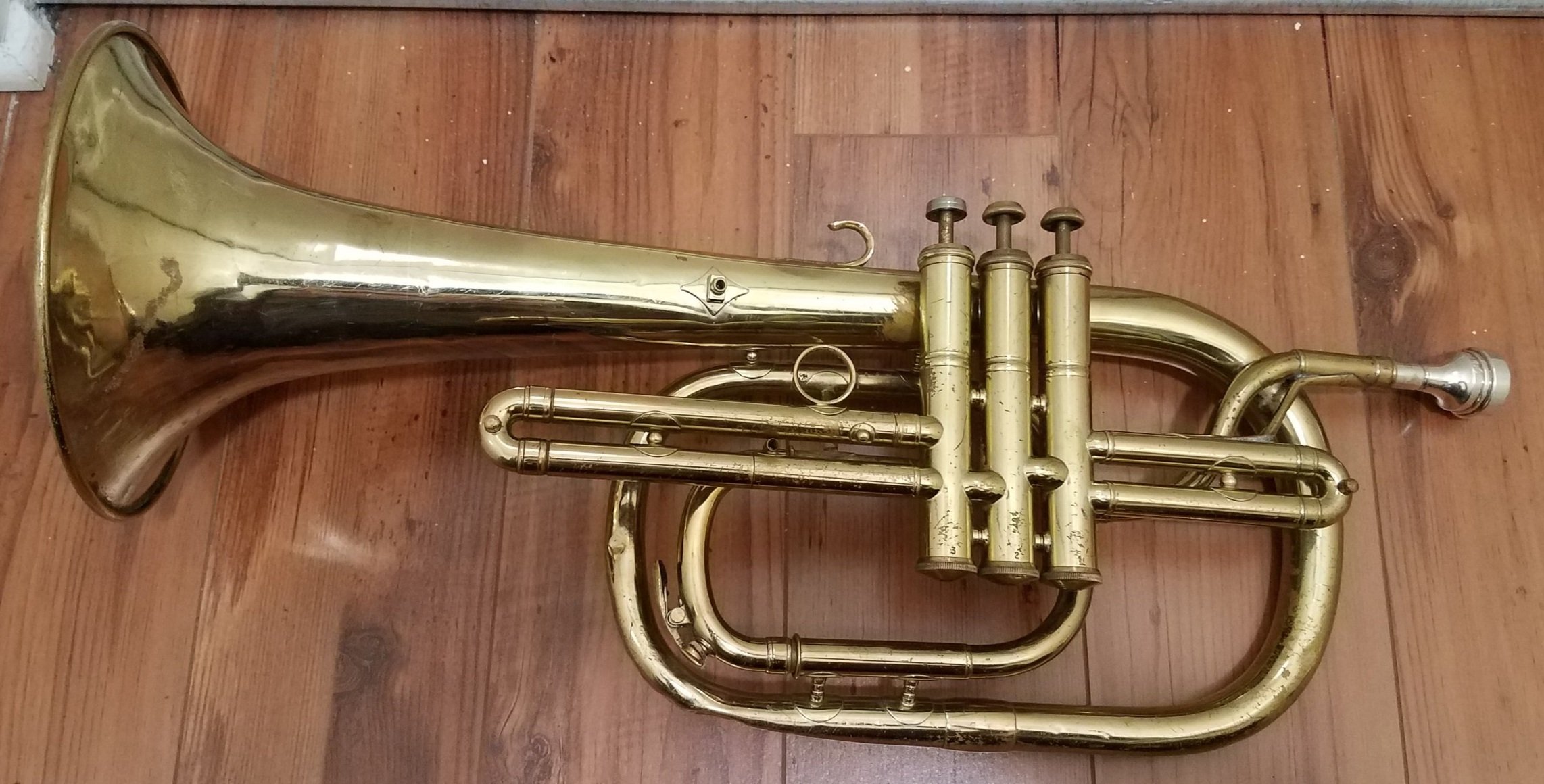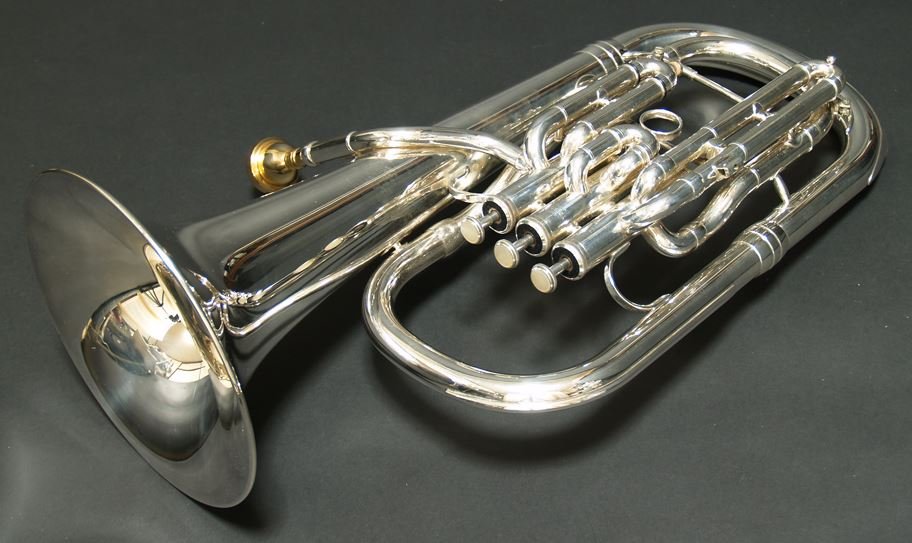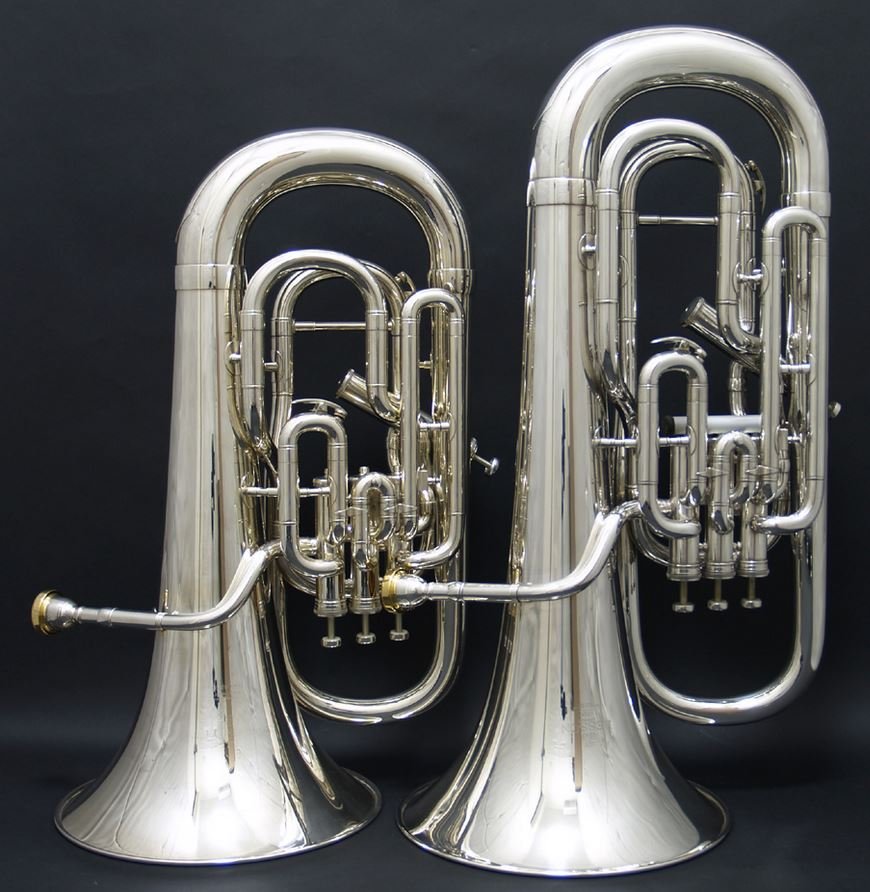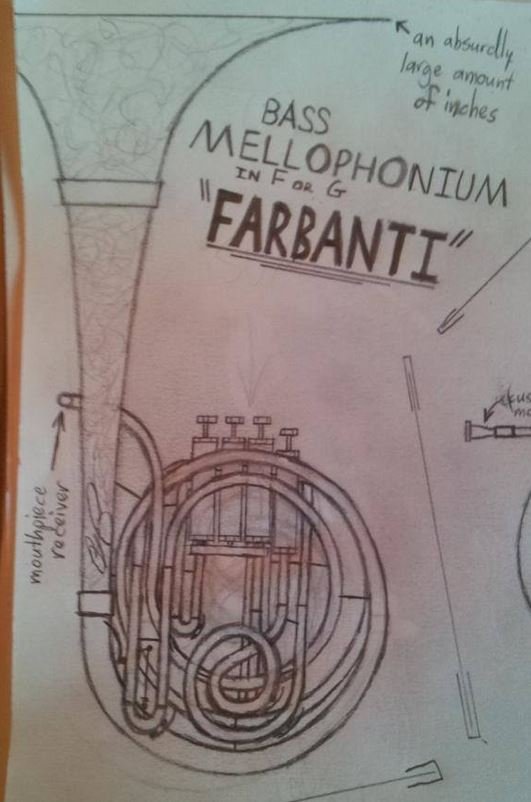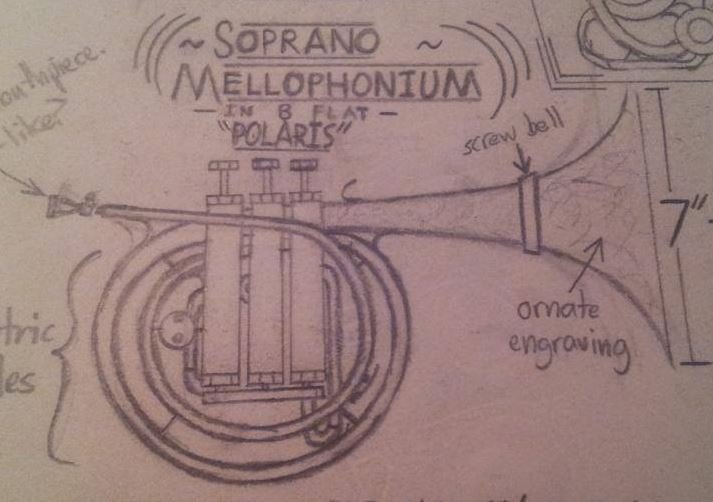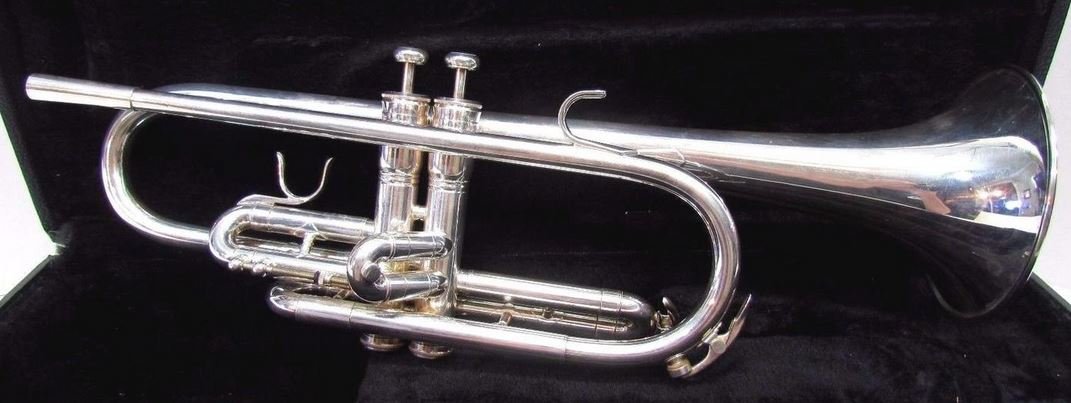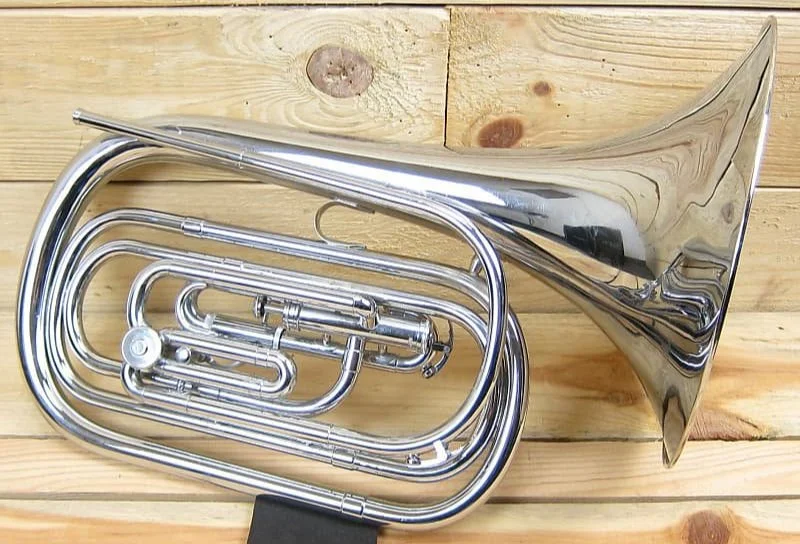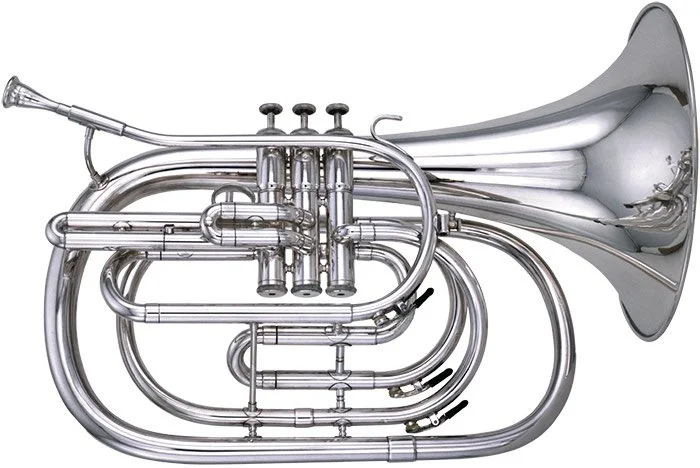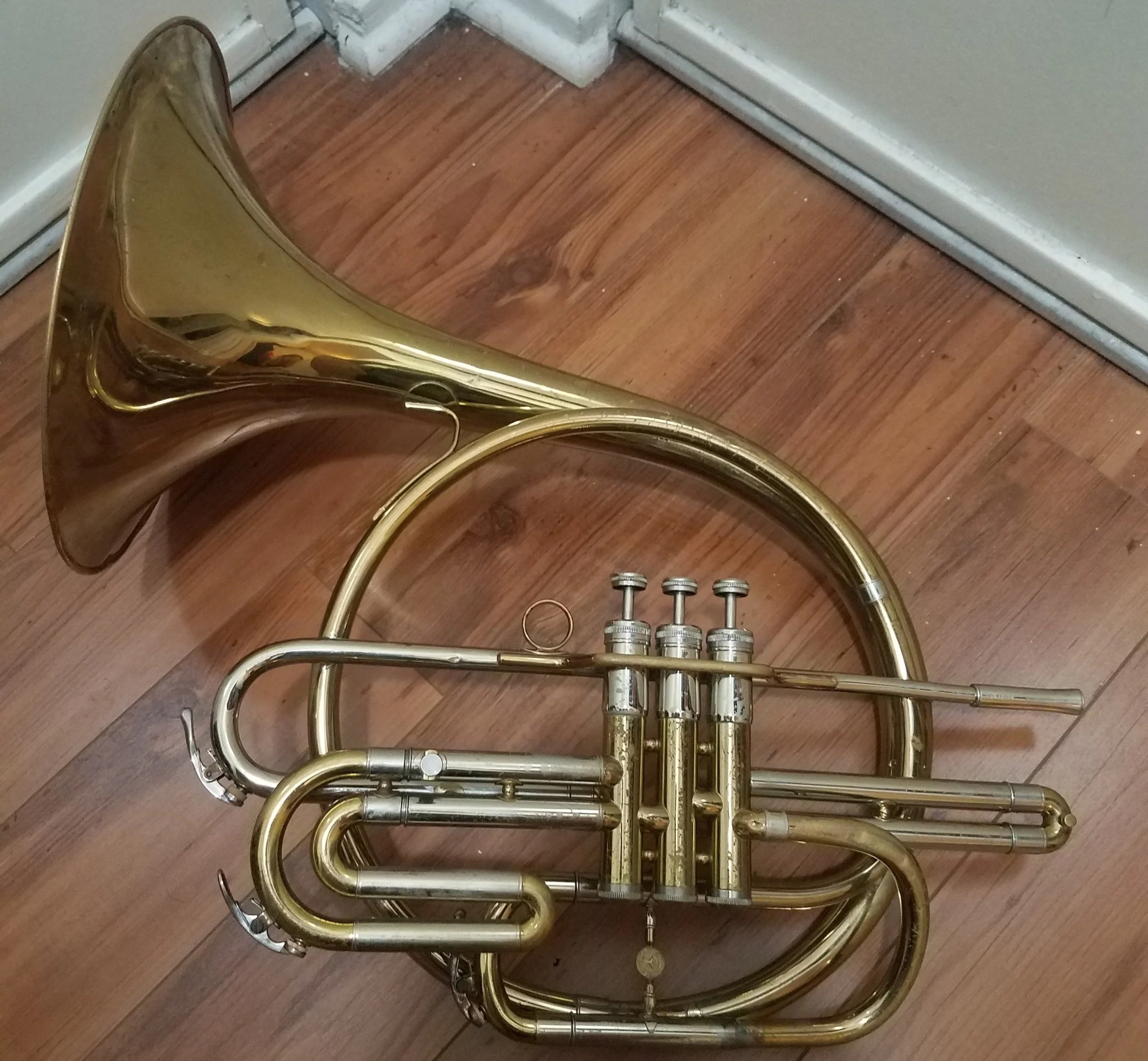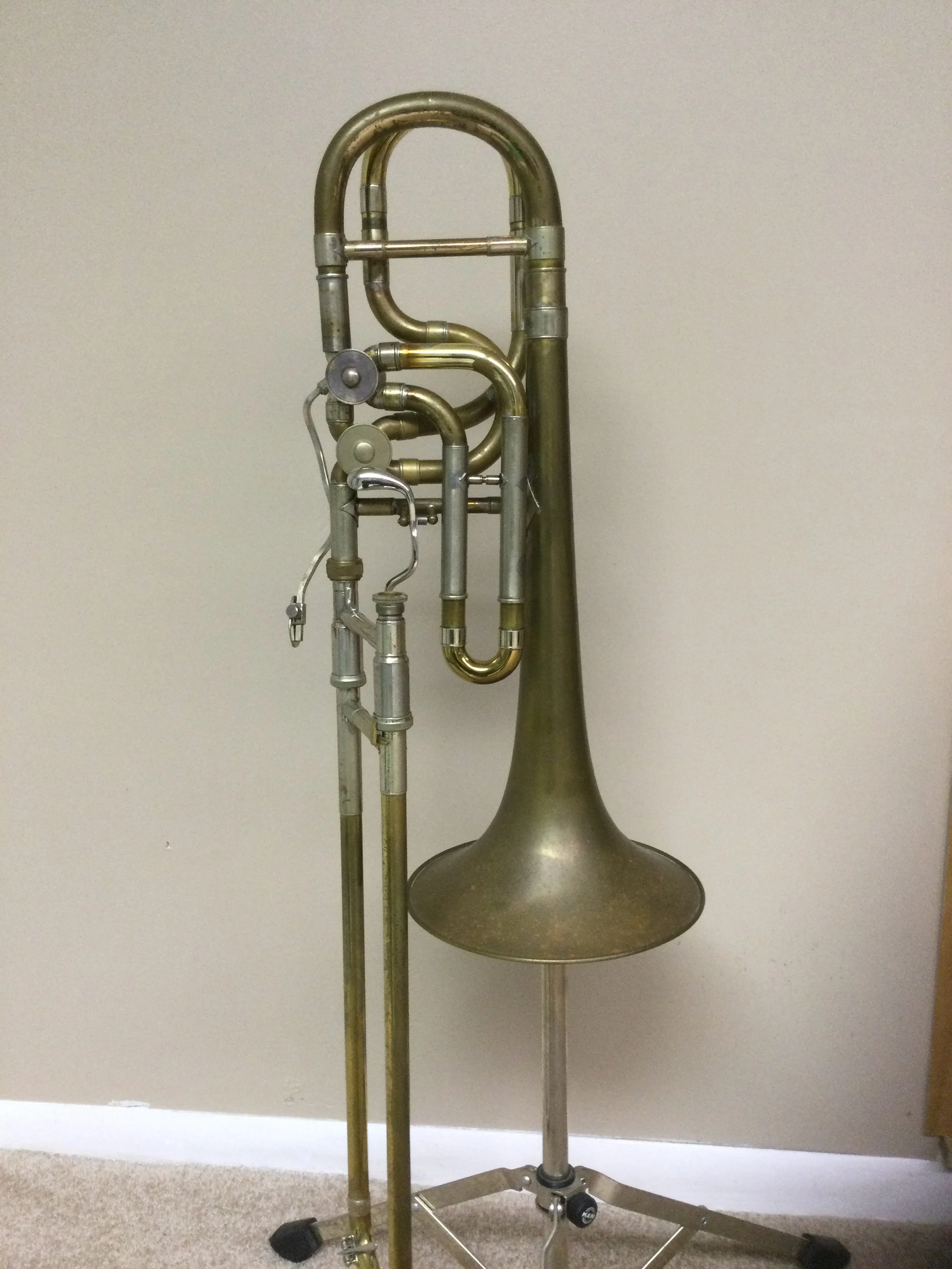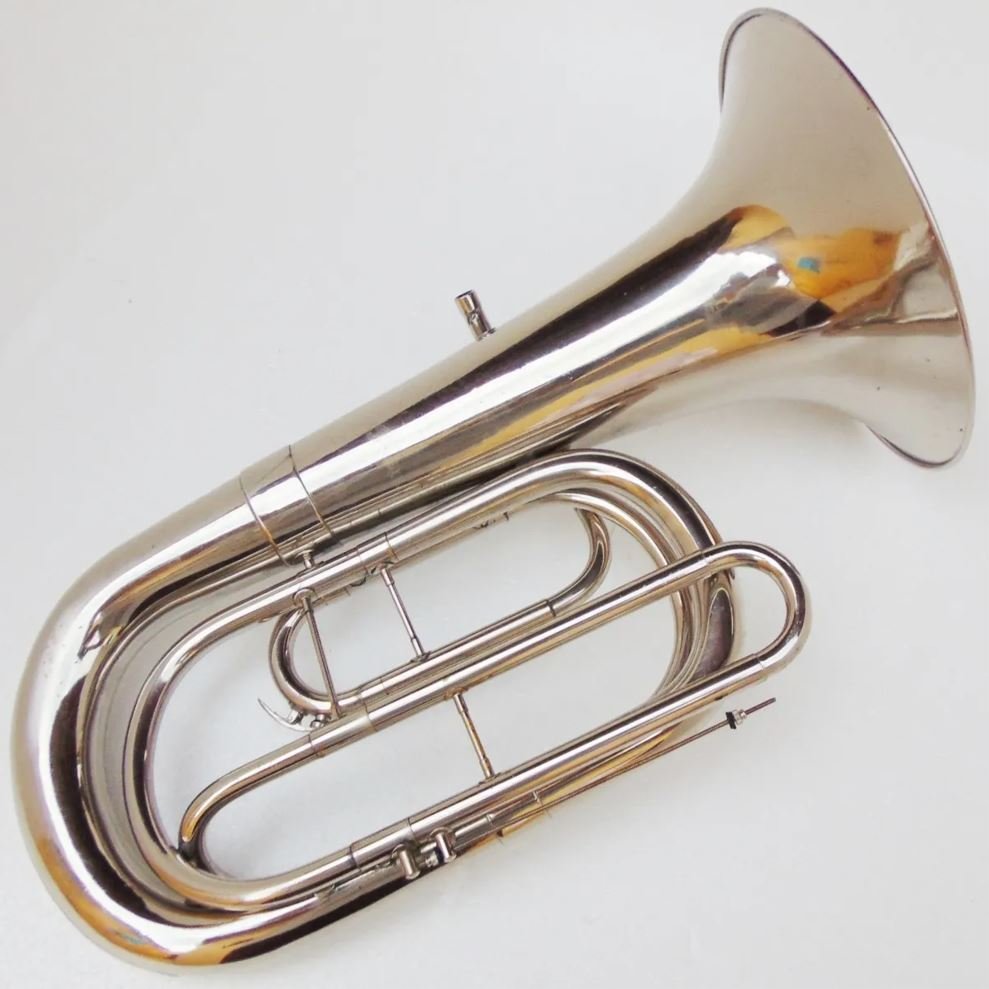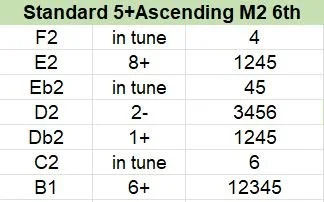The NAMM Show is an annual music industry trade show that brings together hundreds of manufacturers of musical instruments, equipment, and other gear under one massive roof. Its real purpose is for industry people, but lots of musicians come from around the country every year to spend a day (or 3) trying all the instruments and making connections, as well as seeing one of the many live bands performing throughout the event (or performing in one themselves).
For a musician, especially a gearhead multi-instrumentalist like me, walking into the NAMM Show is pretty much the ultimate weapons-grade “kid in a candy store” feeling. I try to go every year, and I usually always collect some thoughts in a write-up of sorts. Here’s my 2023 NAMM brass instrument report!
WARNING: This is full of ultra brass nerd nonsense, but if you’re on this website you were probably expecting that.
Buffet Crampon
This was where I started after walking in the second the show floor opened, and would come back to a couple more times later in the day. Buffet Crampon owns an umbrella of instrument manufacturers, including brass makers Courtois, B&S, and Besson.
Besson Sovereign BE967-2 euphonium: The best euphonium at NAMM this year in my opinion. An excellent instrument that was very responsive and fun to play.
Besson Prestige BE2052 euphonium (gold plated, Steven Mead spec): In the past the Prestige at NAMM has been so spectacular that it felt like magic - definitely a star of the show. This year though, the Prestige didn’t do it for me. Still a very high quality instrument of course, but that colorful Besson magic was missing.
Besson Prestige BE2028-2G-0 British cornet: Playing this lovely cornet opened my eyes to just how amazing a real top of the line brass band-spec cornet can be…and just how NOT amazing the two cornets I have are! The only negative was that the 2 tuning triggers were not very comfortable to use for my hands.
B&S: The trumpets (a few Bbs, one C, all Bach-like) were alright - solid high-quality instruments that played well but didn’t leave a lasting impression. I didn’t play the 2 CC tubas there, as contrabass tubas are not my forte or interest.
Courtois Creation AC421-BHRA-1-0 New York .547” tenor trombone: This trombone was the star of the show for me. I have a strained relationship with large bore tenors, as they feel like the hardest size of trombone to really feel great to play. I’ve tried very few large tenors in my life that I really loved, but this 421 was one of them. It was absolutely effortless to play in all registers and dynamics, had a gorgeous sound, and was very forgiving. In my experience most large tenors have only one of these qualities at a time, and they don’t feel like a complete instrument you can love and rely on. This had everything and it was hard to put down…but with a retail price of $6k I’ll only own one in my dreams!
Other Courtois trombones: There was a Creation AC551BHA-1-0 New York bass trombone and some basic Bach 42BO-style trombone. They played very well, but nothing special or anything I would want to live with (let alone drop serious cash on), which is more in line with my normal Courtois experience (402 Xtreme excluded, which sadly was not at NAMM this time).
Hans Hoyer 8D-style nickel Kruspe double horn: I didn’t check what model this was (and Hoyer makes two different Kruspe models with a ton of different options), but it was a lovely horn with a lovely sound. I would absolutely play one of these as my main horn!
Eastman Shires
Shires TBDR David Rejano Artist Model .547” tenor trombone: This was my favorite Shires tenor, and my second favorite large tenor after the Courtois AC421. It played extremely well and was very easy with a nice sound, but the Courtois did everything it did better. It also had extremely tight slots like all the Shires tenors, meaning you had to play every note EXACTLY right or it wouldn’t work. The Courtois was very forgiving…this, not so much. Very nice horn overall though.
Other Shires large tenor trombones: For me, they were all different flavors of “fine”. Easy to play (besides the tight slots), but with a boring sound. Not lifeless…just not super interesting. And an uninteresting large tenor sound makes me walk away REAL quick. Out of these though, the dual bore Ralph Sauer model was my favorite. But the Rejano did everything it did a lot better! An interesting sidenote is that I liked the Q-series tenors at least as much as the custom ones.
Shires bass trombones: There were two Q36 basses (one with rotors, one with axials) that played very nicely. I generally like Shires basses, and these were no exception. I didn’t LOVE them, but for a solid, reliable bass trombone they’re a great option. There was also a TBGC George Curran Artist Model bass, which I didn’t like at all.
Shires TBQ35 alto trombone: This was probably my favorite Shires instrument there alongside the Rejano. It had a nice vibrant sound and was very easy to play. I’m currently borrowing a custom Shires tuning-in-slide alto with a rose brass bell for a gig, and the Q35 here played and sounded MUCH better in my opinion. The custom TIS alto feels like it has exactly one sound that it likes to play and you can’t get it away from that…and that sound isn’t very colorful. Plus it’s way more expensive than a Q35, which retails for about $2,200. Save money AND sound better! What’s not to love? There was also a TBQAlessi alto, which felt…pretty much exactly the same. I slightly preferred the standard Q35 though.
Shires TBMG Marshall Gilkes Artist Model .500” trombone: I expected to like this model, and I was right. It played very well, the way you would expect an expensive custom small bore (retail is about $3,700) to. But…it didn’t play better than my old 3B, nor did any small bore trombone at the show.
Shires TBQ33 .508” trombone: Also a very good, competent small bore in all ways. Fun to play and very nearly as good as the Marshall Gilkes model for $1,300 less, but again…not as good as my 3B!
Shires EUQ41S euphonium: This Q-series euphonium was one of the best in the show in my opinion. It was extremely easy to play all over the range and sounded excellent. It also had the best left hand ergonomics. Definitely a solid euphonium for any player…it just works.
Willson euphoniums: I really like Willson euphoniums and the dark Willson sound. In the past I’ve always preferred the larger 2950/2960 over the 2900, but this time the 2900TA was my preference over the 2950TA. But the Shires Q41 euph was right in between them and played better than either.
Willson 3400S FA-5 Eb tuba: There were two of these, both labelled with very slightly different model designations (I believe one was a 3400 FA-5S and the other was a 3400S FA-5). And they were very different! The second one I tried was smaller in bore and size than the other, and was not as good. The bigger one (3400S FA-5 I believe) was a fabulous tuba. Big sound, good intonation, easy to play. Most tubas I’ve tried feel like you get a very underwhelming return for your efforts, but this one felt as easy and natural to play as anything smaller. Loved it!
Marching mellophones: There were quite a few Yamaha 204 clones at NAMM. Eastman (EMP304S) and BAC both had one, as did a few of the Chinese manufacturer booths. The BAC even had “Made by Jin Bao” stamped in big block lettering on the valve block…I got a good chuckle out of that. I tried a few of these clones and they all played about the same. Pretty good, but not as easy to play as the real deal. There was also one King 1120 clone at one of the Chinese booths, which was decent. Sadly there were no original mellophones, only the clones.
Marching baritones: Only Yamaha clones. Again Eastman (EMB411S) and BAC both had one, as did a few of the Chinese manufacturer booths. The Eastman was the best I tried, and was lots of fun to play. Reportedly it plays pretty much the same as the real thing.
Eastman EME421S marching euphonium: This is apparently an original design, and not totally thought out as the 2nd valve slide was too long, making it still noticeably flat when pushed all the way in. Additionally, the mouthpiece receiver was forward enough that the bottom bow pushed against my body when I was in playing position. But it sounded nice!
Eastman Geyer double horn (model unknown): Meh.
Conn-Selmer
Conn 88HNV: I was very excited to try this as I play an Elkhart 88H myself. It was…fine. Adequate. Acceptable. Is trombone.
Bach A47BO: Pretty good player but not really my style of trombone, so I didn’t gel with it.
Bach A47XPS: This was nice to play, but the Rejano, Courtois, and Y-Fort trombones did everything it did better.
Bach Bb trumpets: There were around 10 of them, all various flavors of Bach commonly seen, plus a couple of new ones. My favorite was the 190S37X (I think), which played very nicely. The brand new Apollo was good as well, and was probably my 2nd favorite of the bunch. The rest of the Bachs didn’t really work well for me, and they never do!
Conn 8D double horn: I’ve played plenty of 8Ds from all eras. This one was not a great example of the model.
Conn 6D double horn: This is the brand new 6D, which now has a Kruspe wrap like the 8D, but with the small throat and leadpipe of the classic 6D. I liked it!
Conn 10DY double horn: Noooooooooo thanks.
BAC (Best American Craftsmen)
BAC small tenor trombones: Played pretty well overall. A couple were very good (my favorite was one in .508” bore with a nickel bell stem but screw bell copper bell flare, and a carbon fiber slide).
BAC large tenor trombone with F attachment: Pretty alright!
BAC 2-valve bass trombone: Trash!
BAC Apprentice student trombone: Difficult high register, but otherwise a decent little horn.
Yamaha
YBL-835 bass trombone: A brand new Yamaha bass! …Except it looks exactly the same as the outgoing 830. It’s a very noticeable improvement, but is still not an instrument I would ever willingly play or buy. I liked pretty much every other bass there (BAC being the exception) more.
YSL-882OD .547” tenor trombone: Has screw bell. Is otherwise just an 882O. The 882O is fine. Nothing more, nothing less.
YSL-691Z small bore tenor trombone: Hated it immediately lol.
YHR-871D double horn: Sadly Yamaha only brought Geyer horns this time (the 668 Kruspe horn was my favorite horn last time!), but the 871 was still a fabulous instrument. So easy in all registers, especially slurring. Would happily play this as my main horn, even though Geyers aren’t usually my thing.
Yamaha euphoniums: Both the YEP-642SII and YEP-842TS were there, and both were wonderful. My favorite euphs in the show just after the Besson Sovereign.
Yamaha trumpets: They’re all awesome. I particularly loved the YTR-8310Z, but it’s also the one most similar to the older Yamaha trumpet I play on (YTR-737) so it’s not surprising. There were only a few Bbs and one C this year.
V.F. Cerveny
Cerveny VFC-CR 801CQBNPL British-style cornet: I didn’t know what to expect with a Cerveny piston-valved instrument, but this cornet was very good! Not quite as good as the Besson Prestige cornet, but pretty close and for half the price (about $2k vs. $4k). Additionally, the two tuning triggers were much more comfortable for my hands than the Besson’s. They had a red brass model and a nickel-plated yellow brass model, and the red brass was the clear winner (but both were good).
Cerveny VFC-EP7566 II Emperor euphonium: Actually one of the better euphoniums at the show, probably the coolest looking, and the best value for money (less than $5k, vs. $6.3k for the Shires Q41 and much more for a Besson, Willson, or Yamaha). Huge sound, easy to play, good intonation. All good!
Cerveny CCB 603-4R rotary C tuba: I guess this is the famous “Piggy” model of small 4/4 contrabass tuba. It was very easy to and hold play, with a high register easier than the Willson Ebs! Would be a great pit tuba for musicals like Lion King, though I was wishing for a 5th valve.
Cannonball
Cannonball TB16 bass trombone: Looked very Jin Bao, but was a perfectly decent instrument. Not something I would ever choose to play, but I’d definitely take it over the BAC bass or Yamaha 835 (which played a little better to me, but is way more expensive).
Cannonball TB18 small bore tenor trombone: Meh.
ZO
ZO was the second most interesting Chinese maker there. They had a ton of interesting instruments, and most were great players. If I could pick a Chinese company to be an artist for, ZO would 100% be it. While many of their standard models are available elsewhere under different brand names (most commonly Thomann’s house brand), ZO also has unique models such as the Little Dragon travel tubas.
ZO plastic trombone (small bore, King style): This was a new model of plastic trombone to me, and even had the King curved bell brace. It also played circles around every other plastic trombone I’ve played…it really played well! I’ve played pBones and Trombas and they were awful compared to this. I would gladly use one of these on a street gig or something, and definitely for practice and travel. While this model is not on the ZO website, it is available at Thomann as the Startone PTB-10.
ZO plastic trombone (large bore, F attachment): This design has been around for a while, and has never been good. It still isn’t…sounds and feels like you’re playing with a sock in the bell.
ZO plastic British-style cornet: Not bad! I probably wouldn’t play a gig on one, but it would be a great car horn, desk horn, travel horn, etc.
ZO plastic trumpet: Played ok, but intonation was all over the place. Can’t recommend…get the cornet instead.
ZO plastic flugelhorn: I used the plastic flugelhorn mouthpiece they had there as I forgot to bring my own flugel piece (which is why I didn’t try all the flugels at NAMM), and it played ok but didn’t sound like a flugel at all. Pretty much sounded the same as the cornet!
ZO plastic double horn (Kruspe wrap): It played and sounded…like a brass horn? Apart from sluggish valves it was honestly a solid horn. I can definitely recommend it for horn players wanting a travel/practice instrument. This is another instrument missing from the ZO website, but the same model is available in a few different colors at Thomann.
ZO plastic euphonium: I was not a fan. It was hard to play, and intonation was not good…and in the opposite way from how it is on normal euphs!
ZO plastic 3/4 piston Bb tuba (brass valves): Pretty solid player, but the sound was nothing I could think of a use for.
ZO plastic 4/4 rotary Bb tuba (all plastic): Meh.
ZO 4-valve British baritone (ZBH-5000): I guess this is the Jin Bao copy of the Yamaha YBH-621 that’s been around for a long time. I own the Jin Bao 3-valve compensating Besson clone which is a fabulous instrument (I’d honestly take one over the Bessons and Yamaha Neos I’ve tried, especially when price is considered), but always assumed the other non-compensating models wouldn’t be as good. I was wrong! This 4-valve model was awesome. Really fun to play, nice colorful sound, and no issues I could find. It was hard to put down! Thomann currently sells this model as the BR 604.
ZO 3-valve British baritone (ZBH-3000): I played this one briefly. I guess it’s a copy of the student model Yamaha YBH-301, and it was alright but definitely a step below the 4-valve model. Still, if you REALLY need a dirt cheap British-style baritone, it wouldn’t be a bad choice.
ZO Kruspe double horn: I wasn’t a huge fan of this one, it felt very covered to play. Definitely one of the worst Kruspe clones at the show.
ZO Alexander 103 clone double horn (ZFH-BF6500): This one was a surprise. I’ve never played a real Alexander 103 or any clones before, so I didn’t know what to expect. I absolutely LOVED it. It was one of my favorite horns at the show and I played it for a long time. Beautiful bright sound that seemed to do exactly what I wanted to. And it was easy to play too! Knowing that I like the 103 style is dangerous for my wallet…
ZO Bb kinderhorn (ZFH-CB3000): This was a small 3-valve single Bb horn meant for children. The reps there asked me to try it and tell them if I noticed any intonation problems. I did not! It actually played and sounded very nice in all registers, and was very comfortable to hold. I’d happily own one of these too, though I don’t know what I would use it for.
ZO Little Dragon travel tubas: I was really excited that these were here, as I really loved them the last time I tried them. They are very compact rotary travel tubas (about the size of a euphonium) with 4 or 5 valves that look like radiators, but have bore and taper dimensions like a full-size tuba (just ending in a very small diameter flare). Well, I loved them just as much as I did last time. Really easy to play in all registers, with a beefy tuba sound that really doesn’t sound any smaller than a 4/4 tuba to my ears. I would absolutely love to own one of these for recording and pit work. They are so much fun, sound awesome, and are so much more convenient size-wise than a normal tuba.


